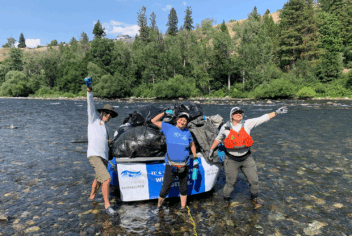“How much limit do I need to buy?” — that’s a difficult question every insurance broker has received while meeting with a nonprofit client.
Although brokers have an obligation to offer as much umbrella limit as the nonprofit wants to buy, no one can put a dollar amount on a hypothetical claim and, unfortunately, predicting the future isn’t part of broker insurance training.
I completely understand that this puts brokers in a tough position — no one wants to be blamed if limits turn out to be insufficient for a large loss.
But we also need to talk about the law of unintended consequences and how requests for higher limits can result in a costly and unhealthy battle royale for everyone except — wait for it — plaintiff attorneys.
The newest fad with plaintiff attorneys appears to be asking for policy limits, without regard to damages of the actual claim. This is an old trick, but it has gotten much worse.
Once they know the policy limit, they refuse to move off that mark, no matter how few — if any — damages can be blackboarded, nor even any evidence that the nonprofit was at fault in any way, because they think juries will award something.
While we see this happening across multiple lines, it is most common with claims alleging sexual abuse.
We support making sure that sufficient limits are available to compensate victims for the costs of counseling and other therapies to help them recover as much as is possible from the trauma of abuse. We work hard to get reasonable offers out to victims as early in the process to try to shield them from more indignities of the litigation process and allow them to move on with their lives.
But that is not what most of these claims are about.
They are driven by outlandish expectations set by plaintiff attorneys that set a plaintiff’s sights on policy limits. Each one becomes a test of bragging rights about how much a plaintiff attorney can extract — and seldom about compensating victims for damages.
In fact, if you visit many of these plaintiff attorneys’ websites, they highlight large jury awards — conveniently omitting the fact that many of these large awards have large, uncollectable portions that were assessed against the perpetrator. They publish these results to condition the public psyche to normalize high awards.
NIA’s commitment is to the long-term health of the nonprofit sector and offering limits that are congruent and proportional to the size of the organization. But also, we have learned from handling thousands of claims that higher limits — especially for sexual abuse — are not sustainable, nor are they even in the best interests of nonprofits and victims.
High umbrella limits mean more and more nonprofit dollars are being allocated to insurance costs — and because the higher limits are there, they then result in higher payouts.
As a nonprofit ourselves, NIA is responsible for making appropriate decisions so that we can continue to obtain appropriate reinsurance and make sure that the coverage we offer remains affordable for the nonprofit sector.
So, we are going to continue doing more to limit the size of umbrella policies to $1-2 million for the most challenging lines whenever possible.
We know it is difficult for insurance brokers to recommend lower limits, so we are going to do it for you by reducing available capacity when we assess each of our members at renewal.
To help support our brokers in this transition, we are aggregating information about umbrella writers who will offer limits higher than those of NIA.
Some nonprofits will insist on having those higher limits, and we understand that there may be contracts that require nonprofits to carry higher limits than NIA offers. We want to support you so that you can provide options to your clients.
We hope you will use the information we provide here to let your clients know why having higher limits may not be in their best interests.
As we navigate this transition, we are appreciative of our brokers, their commitment to the nonprofit sector, and their partnership.





